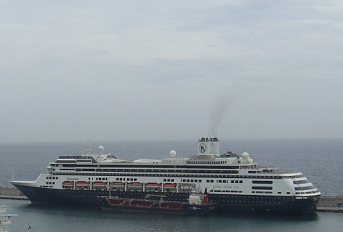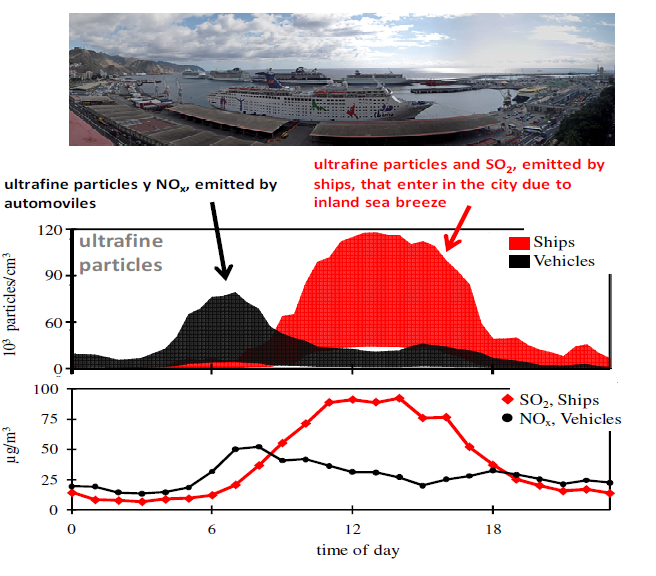SHIP EMISSIONS and URBAN AIR QUALITY
The journal Atmospheric Environment publishes (vol. 45) a study performed by the Izaña Atmospheric Research Centre focused on the impact of ship emissions on the air quality impairment, due to sulphur dioxide and ultrafine particles, in coastal cities.

NEW STUDY: URBAN AIR POLLUTION CAUSED BY SHIP EMISSIONS

The journal Atmospheric Environment publishes (vol. 45) a study performed by the Izaña Atmospheric Research Centre (IARC) focused on assessing the impact of ship emissions on the air quality impairment, due to sulphur dioxide and ultrafine particles (diameter < 0.1 microns), in coastal cities.
Since the mid 1990s the European Commission have been forcing to decrease the emissions of pollutants in vehicle exhausts and in the industry. However, the regulations on ships have been scarce. Ships use heavy fuels, rich in sulphur, with almost no control on the atmospheric emissions. Because the lack of important regulations, emissions of sulphur dioxide since the mid 1980s in the European Union territory, have been decreasing in land, but increasing on the sea.
The new study performed by the IARC and collaborators, have shown how emissions of ships results in high concentrations of sulphur dioxide (SO2) and ultrafine particles in the urban downwind air of coastal cities. Because of their adverse effects on human health, the study is based on ultrafine particles (UFP). Ships emit particles made of carbonaceous material, metals (vanadium, nickel, and copper, among other) and sulphate. A fraction of this sulphate is ultrafine. In most of cities, UFP reach their highest concentrations in the early morning due to vehicle exhaust emissions. However, in port cities the highest concentrations of UFP are recorded from mid morning to almost evening due to inland sea breeze blowing results in the transport of the ship plumes to the city centre. For example, in Santa Cruz de Tenerife (where the study was performed), UFP exhibits concentrations within the range 15-30 thousands particles / cm3 in the early morning (07-09 h), and within the range 35-50 thousands particles / cm3 during the inland sea breeze blowing period (10-17 h) due to the fumigations of ship plumes over the city. In this period, the 65-70% of UFP are linked to ship emissions.
The problem is more severe when onshore ships have their engines working (for self power supply). Some ports have already onshore power supply systems for ships (World Ports Climate Initiative: http://www.wpci.nl/). These actions contribute to improve air quality. Emissions from ships impair human health, results in acidification of coastal water and estuaries and influence on processes affecting climate.
Study
| Title: Ultrafine particles pollution in urban coastal air due to ship emissions. Publication: Atmospheric Environment, 45, 4907-4914, 2011. Authors: Yenny González, Sergio Rodríguez, Juan Carlos Guerra García, Juan Luis Trujillo, Rosa García. http://www.sciencedirect.com/science/article/pii/S1352231011005930 |







